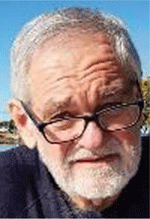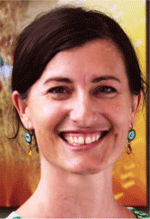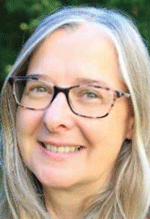Gladstone Harbour: a case study of building social licence-to-operate in a multi-use area
Lyndon Llewellyn A F , Richard Brinkman A , Emma McIntosh B , Nadine Marshall C , Uthpala Pinto D , John Rolfe E and Britta Schaffelke AA Australian Institute of Marine Science, PMB 3, Townsville MC, Qld 4810, Australia.
B Department of Geography and the Environment, University of Oxford, South Parks Road, Oxford, OX1 3QY, UK.
C CSIRO, Sustainable Ecosystems, Davies Laboratory, PMB Aitkenvale, Qld 4814, Australia.
D Estuaries and Catchments, Office of Environment and Heritage, New South Wales Government, 480 Weeroona Road, Lidcombe, NSW 2141, Australia.
E School of Business and Law, CQ University, Rockhampton North, Qld 4701, Australia.
F Corresponding author. Email: L.Llewellyn@aims.gov.au
The APPEA Journal 59(2) 624-631 https://doi.org/10.1071/AJ18052
Accepted: 13 March 2019 Published: 17 June 2019
Abstract
Maintaining a social licence-to-operate is a key challenge for industry and regulators. The city of Gladstone in Queensland, Australia, surrounds a highly industrialised harbour supporting major industrial activities, including alumina refineries and an aluminium smelter, other heavy industry, port facilities and, most recently, three natural gas liquefaction facilities built on nearby Curtis Island. This most recent phase of industrial and port growth coincided with the repeated capture of unhealthy fish and crabs in the harbour in 2011, generating community concern about potential cumulative environmental impacts of development. These were difficult to address at the time because of limited monitoring data and scientific knowledge, as well as some fractured relationships between stakeholders. In response to this debate the Gladstone Healthy Harbour Partnership was formed in 2013 by stakeholders from industry, community groups and all levels of government. Experts from environmental, social and economic disciplines assisted to evaluate and report on the health of the harbour. Membership required ongoing and deep participation in activities which ranged from targeted research to community engagement. Central to partnership activities was a clearly communicated annual Report Card, derived from complex environmental, socioeconomic and cultural data. A Data and Information Management System was developed that integrates data from multiple organisations after automated quality checks, tracks data treatments and calculates the Report Card scores. The Report Card is intended to be meaningful to a wide variety of stakeholders yet allow access to underlying detail. This increased transparency and robustness has contributed to building community trust. Conversations now focus on likely management scenarios, rather than all imagined possibilities, and this in turn paves the way for reducing business risk for industry.
Keywords: community engagement, data, information, report card, risk, SLO, social licence.

Dr Lyndon Llewellyn gained his PhD in Marine Biology from the University of Queensland, followed by additional training in analytical biochemistry (University of NSW) and molecular pharmacology (Yale University). Starting out in biotechnology research at the Australian Institute of Marine Science, his interests and roles have moved towards data science, policy and impact. Along the way, he has led multi-organisational (government, industry) projects on e-research, technology development (biosensors), biodiscovery and marine ecotoxicology (using both biomolecular tools and model organisms). An author of over 100 publications as diverse as a book, book chapters, journal articles, industry reports, patents and eTools, he has been a peer reviewer for numerous granting agencies and journals covering disciplines as varied as analytical chemistry, biochemistry, toxicology, microbiology and biomedicine. |

Dr Richard Brinkman leads the Sustainable Coastal Ecosystems and Industries in Tropical Australia Research Program at the Australian Institute of Marine Science, Townsville, Australia. Richard is a physical oceanographer/numerical modeller with a background in applied environmental fluid dynamics and significant expertise in conducting observational and modelling based research on Australia’s tropical coasts and marginal seas. He has strong experience in identifying research needs of stakeholders to deliver outcomes that benefit their operations, and has delivered projects for clients ranging from state and federal government agencies, natural resource management bodies and a range of industries with coastal and marine interests. Richard’s research interests fall within the broad topic of coastal oceanography with a focus on coupling shelf and ocean circulation, sediment dynamics on tropical coasts and physical–biological interactions at regional and local scales. His emphasis is always on delivering scientific outputs that are accessible, usable and impactful to end-users. |

Dr Emma McIntosh has a PhD from the University of Oxford where she evaluated the effectiveness of biodiversity conservation interventions. Emma’s PhD studies were supported by a prestigious General Sir John Monash Foundation Scholarship. Emma was Science Convenor with the GHHP during 2012–2014. Emma is a member of the Society for Conservation Biology and Royal Geographical Society and was Early Careers Representative in South-East Queensland with the Environmental Institute of Australia and New Zealand. |

Dr Nadine Marshall is a senior social scientist with CSIRO, Land and Water. She did her Honours Degree in Marine Biology at the University of Melbourne, her Master’s Degree at Monash University in Ecology, and then completed her PhD at James Cook University within Environmental Social Sciences. Her current research attempts to better integrate the human dimension into natural resource management. She has written over 100 papers on the subject, and been cited by over 3000 people. Nadine has held various formal advisory positions with industry and local, state and federal governments including the Fisheries Research and Development Corporation, Queensland Fisheries Research Advisory Board, GHHP, Gas Industry Social and Environmental Research Alliance, Townsville Local Marine Advisory Committee for the Great Barrier Reef Marine Park Authority, Queensland Natural Resource Management organisations, as well as holding editorial positions with journals such as Frontiers in Ecology and the Environment, Ecology and Society and Anthropocene. |

Dr Uthpala Pinto is an Environmental Scientist at the NSW Office of Environment and Heritage. Uthpala was a Science Project Officer at GHHP and involved with the production of five Report Cards. He completed a PhD at the University of Western Sydney titled ‘Development of Indicators and Framework for Assessing River Health in Peri-urban Landscape’. He has authored over 20 research publications and contributed significantly to various aspects of freshwater health of the Hawkesbury-Nepean River system in NSW and indicators of environmental and social health. His research interests are in environmental anthropology, river health, catchment and wetland health, tools for predicting and monitoring water quality and soil quality, adaptive management strategies for water cycle management, community aspects of water resources and reuse of water. He is a member of the Project Management Institute Australia and Golden Key Honour Society Australia. |

Professor John Rolfe is a resource economist who has specialised in the use of choice modelling and other non-market valuation techniques. John is Professor of Regional Economic Development at CQ University, and a fellow of the Academy of Social Sciences Australia. He has several research interests, including regional development, environmental, resource and agricultural economic issues, resource trade-offs and economic impact assessment in regional areas. John has been a member of the Independent Science Panel for GHHP since its inception and its Chair since November 2016. |

Dr Britta Schaffelke holds a PhD in Biology from the University of Hamburg, Germany (1993) and has over 25 years of professional experience, spanning marine research, science leadership, environmental management and knowledge exchange. Since 1995, her work has focused on the Great Barrier Reef, specifically on the interface between science and policy for the management of environmental impacts. Britta is currently the Research Program Director – A Healthy and Resilient Great Barrier Reef at the Australian Institute of Marine Science. Britta is a member of the Australian Government’s Reef 2050 Plan Independent Expert Panel, the Fitzroy Basin Association Partnership for River Health Independent Science Panel, the National Environmental Science Program Tropical Water Quality Hub Science Advisory Committee and the Steering Committee of the Reef Restoration and Adaptation Program. |
References
Benham, C. F. (2017). Understanding local community attitudes toward industrial development in the Great Barrier Reef region World Heritage Area: Are environmental impacts perceived to overshadow economic benefits? Natural Resources Forum 41, 42–54.| Understanding local community attitudes toward industrial development in the Great Barrier Reef region World Heritage Area: Are environmental impacts perceived to overshadow economic benefits?Crossref | GoogleScholarGoogle Scholar |
Bossart, G. D. (2011). Marine mammals as sentinel species for oceans and human health. Veterinary Pathology 48, 676–690.
| Marine mammals as sentinel species for oceans and human health.Crossref | GoogleScholarGoogle Scholar |
Boutilier, R. G., and Thomson, I. (2011). Modelling and measuring the social license to operate: Fruits of a dialogue between theory and practice. Available at https://socialicense.com/publications/Modelling%20and%20Measuring%20the%20SLO.pdf [Verified 20 December 2018].
Bunn, S. E., Abal, E. G., Smith, M. J., Choy, S. C., Fellows, C. S., Harch, B. D., Kennard, M. J., and Sheldon, F. (2010). Integration of science and monitoring of river ecosystem health to guide investments in catchment protection and rehabilitation. Freshwater Biology 55, 223–240.
| Integration of science and monitoring of river ecosystem health to guide investments in catchment protection and rehabilitation.Crossref | GoogleScholarGoogle Scholar |
Dambacher, J. M., Hodge, K. B., Babcock, R. C., Fulton, E. A., Apte, S. C., Plagányi, É. E., Warne, M. S. J., and Marshall, N. A. (2013). Models and indicators of key ecological assets in Gladstone Harbour. A report prepared for the Gladstone Healthy Harbour Partnership. Hobart, Tasmania.
Dauvin, J. C., Fisson, C., Garnier, J., Lafite, R., Ruellet, T., Billen, G., Deloffre, J., and Verney, R. (2008). A report card and quality indicators for the Seine Estuary: from scientific approach to operational tool. Marine Pollution Bulletin 57, 187–201.
| A report card and quality indicators for the Seine Estuary: from scientific approach to operational tool.Crossref | GoogleScholarGoogle Scholar |
Gladstone Healthy Harbour Partnership (2017). Technical Report, Gladstone Harbour Report Card 2017, GHHP Technical Report No. 4. Gladstone Healthy Harbour Partnership, Gladstone. Available at (https://dims.ghhp.org.au/repo/public/technical-report-2017) [Verified 14 April 2019].
Irwin, E. G., Culligan, P. J., Fischer-Kowalski, M., Law, K. L., Murtugudde, R., and Pfirman, S. (2018). Bridging barriers to advance global sustainability. Nature Sustainability 1, 324–326.
| Bridging barriers to advance global sustainability.Crossref | GoogleScholarGoogle Scholar |
Johnson, S., Logan, M., Fox, D., Kirkwood, J., Pinto, U., and Mengersen, K. (2017). Environmental decision‐making using Bayesian networks: creating an environmental report card. Applied Stochastic Models in Business and Industry 33, 335–347.
Kwan, B. K. Y., Un, V. K. Y., Cheung, S. G., and Shin, P. K. S. (2018). Horseshoe crabs as potential sentinel species for coastal health: juvenile haemolymph quality and relationship to habitat conditions. Marine and Freshwater Research 69, 894–905.
| Horseshoe crabs as potential sentinel species for coastal health: juvenile haemolymph quality and relationship to habitat conditions.Crossref | GoogleScholarGoogle Scholar |
McIntosh, E. J., Poiner, I. R., and ISP members (2014). Gladstone Harbour Report Card Framework recommendation – March 2014. Report prepared for the Gladstone Healthy Harbour Partnership Management Committee, Brisbane. Available at https://dims.ghhp.org.au/repo/public/6c8181.php [Verified 14 April 2019].
Messer, C. M., Shriver, T. E., and Adams, A. E. (2015). Collective identity and memory: a comparative analysis of community response to environmental hazards. Rural Sociology 80, 314–339.
| Collective identity and memory: a comparative analysis of community response to environmental hazards.Crossref | GoogleScholarGoogle Scholar |
Moffat, K., and Zhang, A. (2014). The paths to social licence to operate: An integrative model explaining community acceptance of mining. Resources Policy 39, 61–70.
| The paths to social licence to operate: An integrative model explaining community acceptance of mining.Crossref | GoogleScholarGoogle Scholar |
Moffat, K., Pert, P., McCrea, R., Boughen, N., Rodriguez, M., and Lacey, J. (2017). Australian attitudes toward mining: Citizen Survey – 2017 Results. CSIRO, Australia. EP178434.
Pascoe, S., Tobin, R., Windle, J., Cannard, T., Marshall, N., Kabir, Z., and Flint, N. (2016). Developing a social, cultural and economic report card for a regional industrial harbour. PLoS One 11, e0148271.
| Developing a social, cultural and economic report card for a regional industrial harbour.Crossref | GoogleScholarGoogle Scholar |
Windle, J., Rolfe, J., and Pascoe, S. (2017). Assessing recreational benefits as an economic indicator for an industrial harbour report card. Ecological Indicators 80, 224–231.
| Assessing recreational benefits as an economic indicator for an industrial harbour report card.Crossref | GoogleScholarGoogle Scholar |


